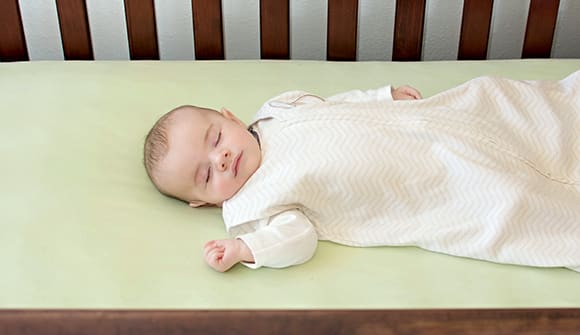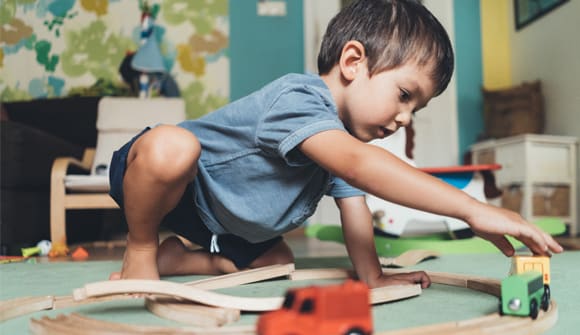Safe slumber updates
New guidelines to keep baby out of harm's way.
Article Author: Beth Stambaugh
Article Date:

If you’re a new parent, keeping your newborn safe is no doubt at the top of your checklist. One of the most important ways to protect your baby is to follow safe sleep practices.
Safe sleep guidelines were developed by the American Academy of Pediatrics (AAP) in 1994 after a growing number of infants died from sudden infant death syndrome (SIDS). Sometimes known as a “crib death,” SIDS refers to an unexplained death of a seemingly healthy baby under 1 year old, usually during sleep.
The AAP’s “Back to Sleep” campaign focused on ensuring babies slept on their backs on a flat, firm surface without soft bedding. It also emphasized the importance of not having any items in the crib, such as bumpers, toys, stuffed animals, pillows or blankets.
Still, each year in the United States, 3,500 infants succumb to sleep-related deaths, according to the AAP. In response, the organization added new important guidelines.
Here are the additional measures to further increase your child’s sleep safety:
- Avoid inclines. Even a 10-degree angle can put your baby at higher risk for SIDS. “Some parents or caregivers will place a baby on an incline to alleviate acid reflux,” said Jessica Winberry, prevention coordinator for the THE PLAYERS Center for Child Health at Wolfson Children's Hospital. “But it could block the baby’s airway or increase the chance of rolling into a dangerous position.”
- Stick to safe surfaces. To be considered safe, a sleep surface must meet the Consumer Product Safety Commission’s standards. Most cribs, bedside sleepers, bassinettes and “play yards” (like a Pack ‘n Play) meet safety regulations, but it’s important to check the product guidelines first. Allowing an infant to sleep on couches or armchairs is a no-no. These surfaces are 22 to 67 times more likely to result in the infant’s death than putting them to sleep in their own crib or bassinet.
- Take the hats off. They may be cute, but due to the risk of overheating, hats aren’t recommended for infants when indoors except in the first hours of life or in the NICU.
- Nix the weighted blankets and swaddles. Even a regular blanket can be dangerous for a sleeping infant, but a weighted blanket is worse because it’s harder for a baby to move away from the mouth and nose.
- Sleep in the same room, but not in the same bed. Have your child “room in” with you in a separate sleeping area for the first 6 months of life, if possible. “You're more likely to hear your baby and be more responsive when sleeping in the same room,” said Winberry.
- Breastfeeding has benefits. The AAP reports that breastfeeding is associated with a reduced risk of SIDS. Unless breastfeeding is not possible, it's recommended that babies be fed with human milk exclusively for the first 6 months of life.
“These new guidelines are based on the AAP’s research to help reduce occurrences of SIDS,” said Winberry. “Be sure to let grandparents and other caregivers know about these additional recommendations to help your little one sleep safely,” said Winberry.
You can find more safety guidelines for reducing preventable injuries in children by visiting Safe Kids of Northeast Florida, powered by THE PLAYERS Center for Child Health at Wolfson Children’s Hospital.



